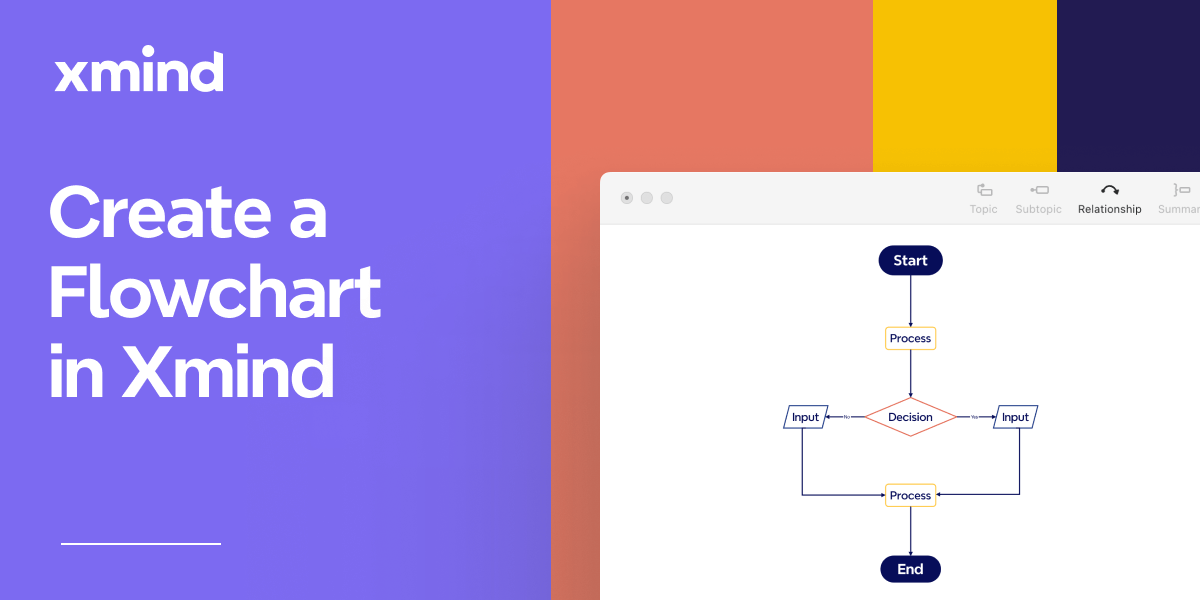Oct 17, 2022
5 Steps To A Successful Project Management With Mind Map

Oct 17, 2022
5 Steps To A Successful Project Management With Mind Map
 Why is project management important? And What are the necessary things to be done in the progress? Check out this blog to see how each step breaks down in mind maps.
Why is project management important? And What are the necessary things to be done in the progress? Check out this blog to see how each step breaks down in mind maps.
Regarding the origin of project management, it is widely believed that it was born during WWII. Some say that 'In the midst of the disorder of war, the order of project management was born.' During the 1940s, the U.S. Army began to apply project management methods to plan and coordinate work in the Manhattan Project. Over time, project management started to apply to industrial manufacturing, technology, finance, and many other fields.
5 Major Steps
Project management is a series of activities carried out in the process of achieving a task. In general, there are 5 major steps in a project management process: project initiation, project planning, task execution, monitoring process, and project closure. We can use mind maps to dismantle each step and see what can we do.
1st: Project Initiation
Depending on your project requirements:
- Understand and confirm what are you going to do: project background, and final targets;
- Use SMART principles to dismantle objectives to be S (specific), M (Measurable), A (Achievable), R (Relevant), and T (Time-bound).
- Understand your project scope: What are necessary and must to do and make a list of them.

2nd: Planning
A comprehensive and detailed overall action plan needs to be developed for all phases of the project.
Your planning should include task decomposition, scheduling, communication plan, budgeting, procurement plan, and risk management.
- Dismantle your task with MECE framework to ensure every scenario is covered;
- Schedule your tasks with the WBS structure to identify resources for each item to facilitate task orders, crisis control, time restriction, and procedure check;
- Ensure regular communications between teams and departments;
- Plan your budget with a comprehensive understanding of resources used and quantity. This includes software, hardware-wise manpower, and etc.;
- Plan your purchase, always make a list.

3rd: Execution
During the process of your project execution. Pay attention to resource allocation, team management, and communication management.
- Make sure your resources are allocated with regard to material usage and personnel capability and based on your budget plan; also ensure your resources are in place, issued well, and utilized as they should;
- Coordinate your teams and manage your team members emotions to avoid negative energy;
- Cross-departmental management: make sure the requirements carried out between each department are well-understood and communicated;
- Make a checklist plan for each phase of your tasks.
 Use Tree Table to checklist your delivery schedule.
Use Tree Table to checklist your delivery schedule.

4th: Monitor
Monitor your plan to identify whether the progress is deviating from the plan and if so, identify changes and control them in time.
- Establish a reporting system for emergency adjustment to monitor execution scope and budget consumption;
- Objectives in each phase are fulfilled and quality delivered is checked;
- For any alteration, report correspondingly, and record assessment.

5th: Project Closure
Make sure the project has its acceptance check from every person in charge respectively; Archive your files for data purposes; and finally, review and summarize what occurred in the progress.

The above mind maps in each section are exported as individual topic with its branches. You can right-click on the topic you want to export, then select [Export Branch To].

Here's a full map.

Reference
https://corporatefinanceinstitute.com/resources/knowledge/other/smart-goal/ https://en.wikipedia.org/wiki/MECE_principle https://people.ucalgary.ca/~design/engg251/First%20Year%20Files/wbss.pdf
More Posts
Flowchart Essentials: Definition, Templates, and Free Softwares
Discover the power of flowcharts with our detailed guide. Learn what a flowchart is, explore practical use cases, and discover how to create and optimize them using softwares like Xmind and Xmind AI for enhanced workflow efficiency.

Bubble Maps: Definition, Examples, and How to Create in Xmind
Discover the power of bubble maps for data visualization with our comprehensive guide. Learn about different types, practical applications, and best mind mapping tools like Xmind. Get step-by-step instructions and expert tips to create stunning bubble maps for brainstorming, project management, and report writing.

The Plan-Do-Check-Act (PDCA) Cycle, Explained (+Mind Map Examples of PDCA)
PDCA is a simple yet effective methodology that can help you improve your work processes and get better results. By following the cycle's four steps - Plan, Do, Check, and Act - you can achieve continuous improvement in your operations, leading to better quality, increased efficiency, and greater customer satisfaction. Xmind is a great tool for implementing the PDCA model.


One space for all your ideas
Organize thoughts, visualize structures, connect ideas, and unlock insights.
Get Started for Free


